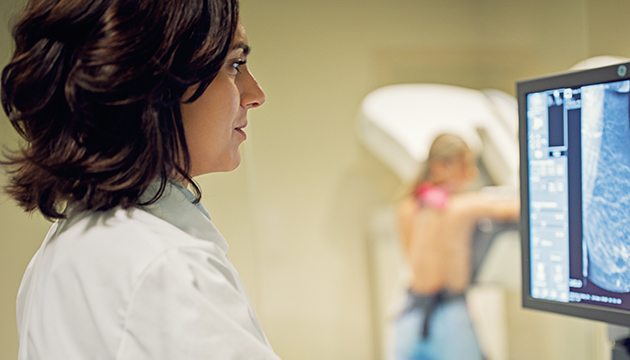Breast health for all: what to keep in mind with screening guidelines

Plan to talk with your provider about what’s right for you.
Breast cancer screenings are a key part of early detection and treatment.
Since 1990, breast cancer mortality has gone down by 40%. In fact, the 5-year survival rate is 99% for people whose cancer is caught early — before it can spread.
Regular breast cancer screenings such as mammograms make a clear difference, says Lisa Hazard, MD, a cancer care doctor who specializes in providing radiation treatment.
Dr. Hazard cares for patients in the Breast Cancer Program at PeaceHealth’s Cancer Center in Sedro-Woolley, Washington. She doesn’t perform mammograms, but she recognizes that regular screenings can have a big impact on when and how she cares for patients.
“There’s no question that treatments are both more effective and have fewer side effects when breast cancer is detected early,” she says.
When to start screening and how often
How often should you get screened, and at what age should you start?
It depends.
Recent health guidelines emphasize a personalized approach. Your screening schedule may be different than your friends’ and family members’.
Experts agree that mammograms are the best screening test for people at average risk of breast cancer. But they don’t all agree on the age at which you should start and how often you need one.
One leading source, the US Preventive Services Taskforce recommends that all women get screened every other year starting at age 40 and continuing through age 74.
Based on expertise from the American College of Radiology and the American Society of Breast Surgeons, providers at PeaceHealth recommend breast cancer screenings once a year.
Read more on breast cancer screening recommendations.
When you start screening and how often you get screened also can be influenced by other things, such as whether you:
- Have a family history of breast cancer, especially with the BRCA gene.
- Notice unusual changes in chest tissue, such as a lump, nipple discharge or changes in skin color or texture.
- Have had radiation treatment to the chest area, which could increase your risk.
- Have had hormone therapy, which may raise your risk.
Read more on what can increase your risk for breast cancer.
The ideal is to screen often enough to find cancer at its most treatable stage. At the same time, you want to avoid doing screening too often. That can take extra time and cause unnecessary stress.
To strike the right balance, talk with your provider about when to get screenings. They can help you decide based on your risk factors and the available screenings.
Breast cancer in men
You might think breast cancer affects only women.
The truth is that everyone has breast tissue. So we all have some risk for developing breast cancer. That makes it all the more important to have a conversation with your provider.
Mammograms may be an option for men at higher risk for the same reasons as women:
- Inheriting the BRCA gene
- Noticing unusual changes to chest tissue
- Having had radiation treatment to the chest
- Having taken certain types of hormone therapy
Learn more about breast cancer in men.
Screening techniques
The most common way to screen for breast cancer is with a mammogram. This is essentially an X-ray of your breast tissue.
PeaceHealth offers 3-D mammograms in many locations. This is the latest technology available for breast cancer screenings.
Your healthcare provider also may do an in-office breast exam to find any changes that may not show up on a mammogram.
It’s also a good idea to consider doing a monthly self-exam.
Summary
The decision about when to start and how often to have mammograms is up to you. Work with your provider to look at your family history, genetics and past health conditions. This will help you make an informed choice to protect your breast health.






